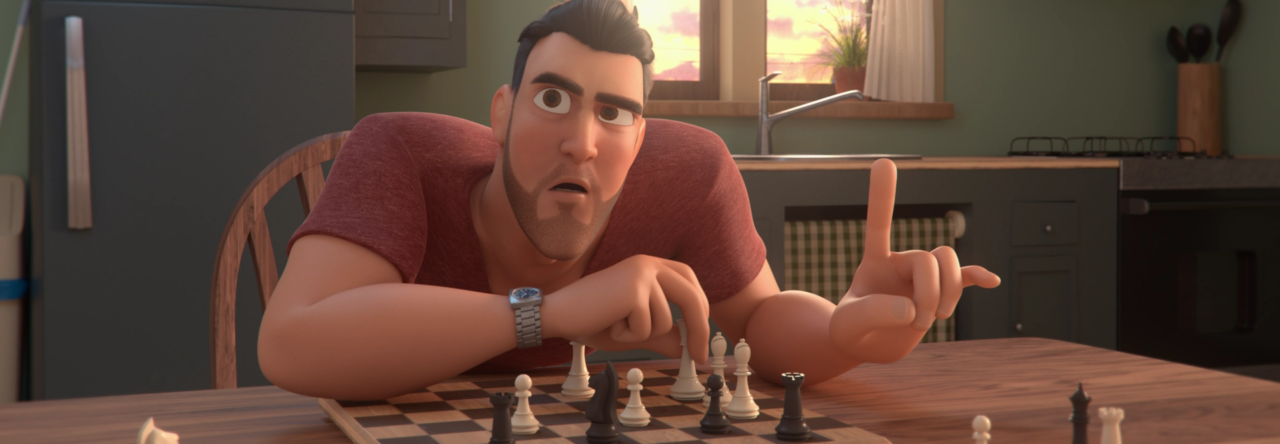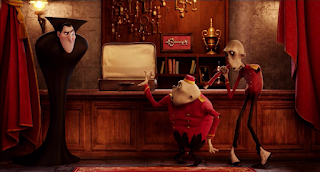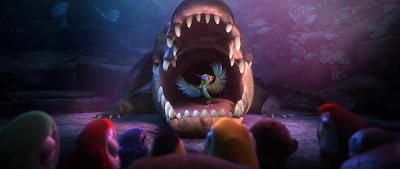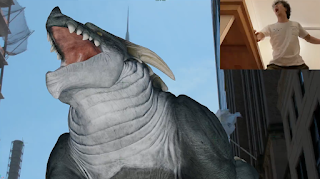Join Us for a FREE AnimSchool VFX Animation Workshop with industry veteran and AnimSchool instructor Tony Mecca on Thursday, November 4th, 2:30 PM (PST) 5:30 PM (EST)
AnimSchool Instructor Tony Mecca has worked on it all
He’s animated on video games, feature films, VFX, and currently, he is working at Universal Creative in their Ride Design and Show Technology department where he is working to create the next generation of storytelling and immersive experiences for new lands and attractions at Universal. In addition to his impressive career in animation, Tony also started the VFX Creature Animation course here at AnimSchool. In our interview with him, we go in-depth with what you can expect from the VFX Creature Animation course and who the class is best suited for. Tony also goes through what the day-to-day at a VFX studio is like and how it differs from a traditional CG animation feature studio.
Tell us your story! How did you get into this industry?
From a very young age, I have always wanted to work in special effects for movies. I used to build those Revell models all the time and after learning a bit about the industry from those 90s “making of the movie” specials, I assumed I wanted to be a model builder. Of course, things shifted to CG, and by the time I was in college I was learning all aspects of digital art for film. Even though when I started I assumed I would gravitate towards digital modeling or maybe lighting, I fell in love with animation and completely shifted all of my thinking and studies to bringing characters to life. After graduating, I got hired into a game studio where I worked for over 5 years and then started my adventure in feature films. I traveled the world working on many different feature films and eventually ended up at Universal Studios where I am able to combine my skillsets in animation, creative direction, and technology to lead teams and play a role in creating our future landscape of world-class attractions.
What were some of your first jobs in the industry?
The first job that I ever had was right out of college. I worked at a video game company called High Voltage, so I got to work on The Family Guy video game. I just jumped right into it. All hand-keyed animation working with the animators. Then I went on to America’s Army. So I went from super cartoony to combat simulation with Conduit and Conduit 2 where they were more of that Sci-fi adventure stuff. So I really started in games, right from the get-go.
How did you make the jump from video game animator to theme park creative producer?
I went to another online animation school while I was working in games, specifically tailoring feature film animation like AnimSchool does, and then I got hired right into Rhythm and Hues. I got thrown into VFX right away. Since I hadn’t used a plate before in my entire life, Rhythm and Hues did a training program where you spend two weeks in their training department learning the plates. And they don’t use Maya, they use Vudu. Rhythm and Hues, Dreamworks and Pixar all use their own custom animation software. So I learned Vudu and went right into Mr. Popper’s Penguins. I worked on a few movies there and worked up to a lead animator. Then I jumped over to Blue Sky and back to full CG animation where I worked on a few shows there (Epic and Rio 2). Then I went back to Vancouver where I worked as a lead at Digital Domain on Fast and Furious 7, X-Men: Days of Future Past, Lost River…and then went to Sony Imageworks where I worked on Hotel Transylvania 2. So I went from super hyper-realistic back to insanely pushed animation. I’ve been crazy enough to go back and forth between multiple animation styles. After Sony, I went down to Florida to work at Magic Leap which is a top-secret tech start-up. I can’t say a lot of what I did there, but it was a lot of behind-the-scenes next-generation animation stuff. And then I was able to make the jump to Universal because theme parks are awesome and never in a million years did I put two and two together. You don’t realize it, but all these attractions you ride are movie-based and they have a lot of media and technology and show syncing. Since Universal started with the Back to the Future ride and E.T., they’ve been at the pinnacle of technology for movie special effects when it comes to integration with theme parks. So I jumped into that role where I’m on a few of the teams at Universal Creative that are in charge of designing the next generation of rides, attractions, and lands. I work with Universal Media which owns Dreamworks and Illumination, so I get to work a lot with their IPs and animation crews. And of course, a lot of the other vendors we use are your typical AAA-level VFX studios for all of our attractions. So I get to be exposed to all different types of animation and animation technology.
Is it better to specialize or be more of a generalist?
In terms of animation itself, it’s still better to concentrate just on animation for now. You can know a little bit about modeling, a little bit about lighting—that’s fine. There’s nothing wrong with understanding what the other elements are in what you’re doing. But really hone in your skillset into animation if you want to be an animator. Don’t spend 50% of your time trying to light your shot. You really want to get your concentration focused on just the animation portion of it. It’s always about having that raw talent and understanding of being a storyteller and an entertainer. I always tell my student that if you have two identical reels and one reel is super polished and nails the 12 principles, and you have another reel that is pretty good, lacks some polish, but is hilarious or got a dramatic reaction or made the viewer feel something, ten times out of ten that’s the person that’s going to get hired. Learning entertainment and how to be a good animator is the hard part. It’s easy to learn the 12 principles and how to smooth arcs and things like that. It’s all about what you can do with the craft that makes it new and unique. And that’s all in your story and some of these shots are only a few seconds long. My advice would be to be interested in other things. Definitely be interested in things outside of animation. Walt Disney said it’s about the illusion of life, but if you don’t have one how can you create that illusion. Do things outside of animation because those are the stories that you’re going to bring into your animation. So step away from the computer, movies and games. Go try something else because that’s the experience you want to bring into your storytelling. In terms of AnimSchool, just concentrate on the animation. I’ve had students who want to do modeling and lighting and animation classes all at once and I’m just like “No, do the one and do a really good job at it.”
How different is the workflow for creature animation compared to character animation?
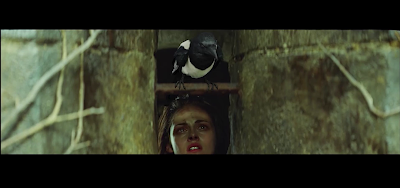
Do all the same principles of animation apply to creatures?
Absolutely! The basics are even more important when breaking creatures down. We start blocking the shots out with spheres and basic shapes. It all comes back to the bouncing balls!
Is the quality of VFX animation lower because you are presenting so many iterations and ideas constantly?
You see some beautiful VFX animation and you think, Man it must’ve taken months to do that. And yeah, they did, but that was just version 17. It definitely still demands the highest quality because they have budgets that are the same, or even more, than animated films. You do have to hit that level of quality but usually at a much more condensed time frame because you’re doing three or four different things. That’s another thing; in traditional CG animation, you’re only doing one shot at a time (or if you’re lucky, you’ll get a sequence of three shots in a row). But in VFX, sometimes you’re working on three or four shots at once in different parts of the movie because usually, the directors aren’t on-site (they might only review once a week or once every two weeks). So in VFX animation, you really learn how to bounce between different creatures, characters, shots, etc. You learn how to animate really quickly at a high bar really quick in VFX.
How do you find or create reference for creatures that don’t exist?
The same way you create reference for any shot. Every new shot is a shot that has never been done before—VFX or not—and you cannot just google exactly what you want and get the perfect reference. You start with what you know and gather that. Even just parts of motions or timings or posing you are looking for. Study the known to create the unknown. In terms of creatures, I have my students rotoscope animals with bouncing balls throughout most of the class. The point is to create a muscle memory of actions and moves that help “fill in the blanks” so to speak on performances or parts of performances where you don’t have anything to go off of. It’s all about practice and knowing how to use the known, even if it’s in your head, to create or fill in the gaps of the unknown. It truly is about taking all the reference you can from the animal kingdom and yourself, filling in the gaps, and then adding the flair to it. Because you just don’t want to rotoscope over something that exists in reality, because it’s already there. We want to create something fantastic. We go over a lot of this in the class—how to take video reference, what to take from what, how to combine it—and students have a lot of fun with that. They love getting to take 20-30 different things and mashing it together into something awesome.
What pushed you to start the creature animation program at AnimSchool?
I taught body mechanics at Animschool for many years and some students seemed to really enjoy doing the dog walk assignment and wanted more. I also have seen the lack of schools teaching fantasy creature animation combined with actual real-world tracked plates. I learned how to use and work with plates on my first job at Rhythm and Hues during their 2-week training session for new animators to the company. Then you just kind of get thrown into the deep end if you have never worked at other VFX companies before in terms of how to use those plate skills you literally just learned to create shots in a movie. The point of this course is to better equip students for their first job and give them a leg up in not only creature animation performance, but also working with real-world plates in a simulated production environment they would be exposed to at a studio.
Who is the creature animation class best for?
It’s for anyone who’s interested in learning more about the VFX side of things. We’ve had some students that have already worked in the industry or were currently working who wanted to hone their skills to that next level. Because the class sizes are usually smaller and I consider this a graduating mentor-level class; you do get a lot more one on one time. I wrote the syllabus so I can alter the syllabus. We can move things around. We can shift dates. There is no amount of work we won’t expand on if you knock the first project out of the park. I’m only going to make the second half harder. We’re really going to push the students. I’ve had students that have worked with plates before and they ended up doing 15 characters. There’s no limit to the number of characters I’ll make you put in this shot if you’re ready for it. I will push you to the max. On the other hand, I’ve had students who have never used plates before and have never animated a quadruped before. They do the class and end up getting hired to work on a movie. It’s for all levels. It’s geared a bit more towards those who have never done creature animation or VFX style animation before, but we have had some pretty advanced students in here and we can gear the syllabus to them too. It’s great because students that are just starting out can see how complex it can be. And to the students who are more advanced, it’s always good to have a refresher of the basics to re-grasp some of those concepts.
What are the main differences between your creature animation and character animation classes?
With the creature class, we focus more on that muscle memory. Everyone thinks creatures are so complex and that you have to learn all these things about quadrupeds, but in the end, everything comes back to the bouncing balls. We start by planning your shot out with just spheres. How do we get the character from point A to point B doing the action that we want with the performance that we want? How do we break down that motion with the body mechanics of it just on spheres? We talk a lot about rotoscoping spheres over animals. I have my students do that for a majority of the class because it builds that muscle memory. If you don’t have the perfect piece of reference, how do you connect them? Oh, you do it like this. How do you know that? Well, because when I did the squirrel that way and combined it with the skunk and the lizard, my brain is just telling me it works like this. And yeah! It’s from practice and muscle memory and really learning how to connect those pieces together. And then there’s also a lot of video reference of yourself. This was done at the very very beginning, even on Jurassic Park, the first thing director Phil Tippett had his animators do was get away from the computer. He brought them into acting classes and said, “Everyone act like a raptor and look around.” There’s such great footage of them in the parking lot acting like gallimimus, jumping over ILMs parking lot, and you look at the shot in the film and it’s the same timing. It’s adapting that performance and that gusto and mechanics onto a character that doesn’t exist. So we go over a lot of that in the creature class. Not to say it differs too much from the typical CG method, but more so because the characters are typically not bipedal or have any human anatomy to them.
How do you push your students towards industry-level work? What are some key concepts you cover in your class?
I teach 2 graduating-level classes at AnimSchool and my mentality as an instructor at this level has always been to transition from a classroom-like environment to a studio one. In the creature course, we have lectures and informative classes, but as we progress I want the students to start getting notes from me as if they were a member on my animation team. We start out by talking about how to use a plate and how to use video reference, and eventually I shift into a studio environment. About halfway through the class, I start to run the classes as dailies to prep the students for the type of notes they would get in the industry (the same style notes I give to the animation teams I work with currently). I’ll stop giving notes about arcs and timing and instead say we need to bump up the aggression here or we need to ground the character more here and have him slip on something. It’s fewer notes about specifics from your animation lead/supervisor but more so notes that you would get from a director, which is not animation talk and more about the character itself. By the end of the course, students should truly feel like they’re having dailies with a director and know how to translate those kinds of notes into their animation. I want them to be prepped as much as possible for this industry.
Who/what are some of your biggest inspirations in animation?
Too many to list but I always look up to the innovators. The 9 old men, the Spaz Williams of the industry. Those who didn’t just take an established craft and master it, they literally discovered and wrote the rules. How do you get a T1000 to blend into a scene? – You literally discover and write Photoshop. How do you get dinosaurs to look and feel real in the latest Spielberg movie at the time? – You literally invent CG creature animation. It’s a space I enjoy being in. I am always working on the future of storytelling.
Do you prefer animating characters or creatures? VFX, games or film?
I’ve been fortunate enough in my career to touch all styles of animation in many different mediums. From monsters in Snow White and the Huntsman to the zany antics and style of Hotel Transylvania to cartoony games like Family Guy to sci-fi shooters like the Conduit. I’ve done a lot of different animation styles and have worked for many years in the top-secret media divisions of company’s like Magic Leap and my current role at Universal. Universal owns Dreamworks and Illumination and we feature attractions with IPs like Jurassic Park, Transformers, and King Kong so I am still exposed to a wide variety of animation mediums and styles. My favorite thing is being able to move in between them. I find it hard to get sick or burned out on a specific style or medium because I am lucky enough to work on them all at the same time!
Is it easier to get into creature animation for VFX/games compared to character animation for film/TV?
That really all depends on industry trends and your location. Sometimes there are 5 VFX heavy summer blockbusters going on at once and there is a shortage of good Jr’s for VFX, and sometimes there is a mass exodus from certain animation studios and new talent is needed ASAP. I’ve seen it go both ways but VFX studios tend to need to ramp up much quicker and some are more prone to giving Jr’s a shot in larger quantities. The point of the course is to make sure that the students are at an advantage for any VFX studio need should the timing be in their favor. There are two major things to getting hired in your dream job: skill and luck. Luck is going to happen because everyone has luck. Skill is not guaranteed. Would you rather be really lucky with no skill, or have high skill and when the luck comes, you can combine the two together. There are plenty of artists out there who are very lucky, who are born into Hollywood or have friends and have all the hookups in the world, and they still can’t get into the industry because they don’t have the skill set. What we’re doing here at AnimSchool, is we’re making it so that you do have the skill set. So that when the luck and timing align, it’s a no-brainer for you to jump right in.
What’s the best way to get better at creature animation? Most animation programs train us how to animate human, bi-ped creatures, but how do you learn how to animate different creatures such as birds, lizards and monsters.
Best way I can think of is to attend this place called AnimSchool and sign up for the creature course!
Can you talk about how to create a reel for creature animation jobs? Any tips?
I always tell my students to gear a reel to the studio they are applying to. Now at first, being a student, of course, you might not have a lot of content to make separate reels for VFX, games, full-feature, etc. But, you can order your reel appropriately. For example, if you did all of AnimSchool AND the creatures course, I would recommend putting the creature work FIRST on the reel if applying to a VFX studio. This way it showcases to the recruiter from the get-go that you have creature chops while supplementing it with other work later in the reel.
Aside from the technical skills, what are some soft skills that are essential to being a good creature animator?
I think the two most important skills in creature VFX animation are agility and patience. The ability to splock quickly EXPECTING change and know that you might have to present an animation 15 different ways before buy off. Knowing that there might not be storyboards or even animatics, you have to actually come up with the idea and pitch it to a team or director that might not know what they want right away. So much of VFX creature animation is the exploration of a monster or a creature while dealing with tight deadlines.
What has it been like teaching at AnimSchool?
I’ve been teaching at AnimSchool for over 5 years and it has been amazing! Working with Manuel, Dave, and the crew to develop this program has been very rewarding. My absolute favorite part about teaching here is meeting all the students from around the world. Seeing their culture come out in their acting choices and being able to learn a little about all walks of life from around the globe has been an experience I wouldn’t trade for anything!
What’s next for you?
Unfortunately being in the top-secret group in the top-secret division means I cannot share anything at this time… but… I can refer you to Universals official blog where they make public announcements like our new theme park Epic Universe! 🙂
https://blog.discoveruniversal.com/destination/announcing-universals-epic-universe/
Find out the latest about Universal Creative on their LinkedIn page or learn about alternative careers in animation and check out what careers Universal Creative currently has available.
Sign up today to learn from industry-leading animators like Tony in our online accredited courses (ACCSC). Apply today at animschool.edu. Tony is currently teaching Entertainment & Appeal and VFX Creature Animation.

